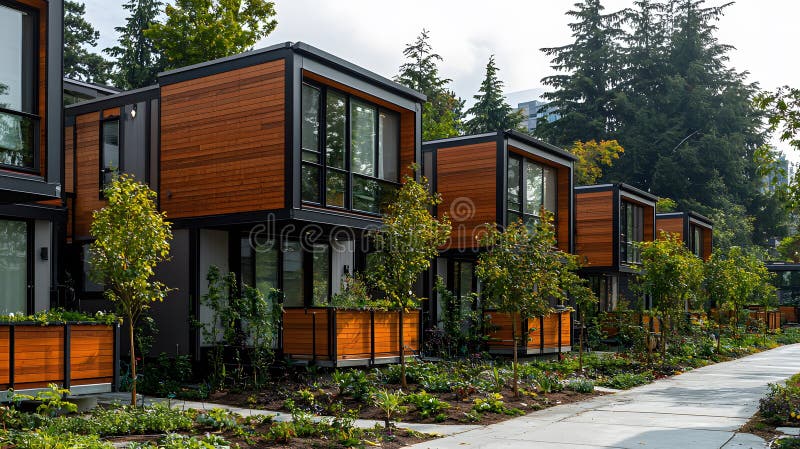
The Intersection of Technology and Modular Design in Modern Homes
In the ever-evolving landscape of home construction, the intersection of technology and modular design has emerged as a groundbreaking trend. This innovative approach is not only reshaping the way homes are built but also redefining the future of housing. By combining the efficiency of modular design with cutting-edge technology, modern homes are becoming more adaptable, sustainable, and efficient. This intersection is especially relevant for home enthusiasts who value both functionality and aesthetics.

The Rise of Modular Design
Modular design has gained popularity due to its ability to reduce construction time and costs. Unlike traditional building methods, modular homes are constructed off-site in controlled environments, leading to fewer delays and higher quality control. For those interested in preparing your land for a modular home, it’s essential to understand the benefits and challenges of this approach. The efficiency of modular design is further enhanced when integrated with advanced technologies.
Technological Advancements in Construction
Technology plays a crucial role in modern construction. From 3D printing to smart home systems, technological advancements are constantly pushing the boundaries of what’s possible in home building. These innovations not only improve construction processes but also enhance the living experience for homeowners. As highlighted in an article by CNBC, the integration of technology in modular design is transforming the housing industry.
The Benefits of Smart Gadgets
Smart gadgets have become an essential component of modern modular homes. These devices offer convenience, energy efficiency, and enhanced security. By incorporating smart technology into modular designs, homeowners can enjoy a seamless and connected living experience. To explore more about smart gadgets, you can refer to the article on Smart Gadgets.
Sustainability in Modular Design
One of the most significant advantages of modular design is its sustainability. By utilizing recycled materials and minimizing waste, modular homes have a lower environmental impact compared to traditional homes. Additionally, the energy efficiency of these homes is further enhanced by incorporating sustainable technologies. For more insights on climate resilience and sustainability, check out the article on Climate Resilience.
The Future of Housing
The future of housing lies in the seamless integration of technology and modular design. As more people recognize the benefits of this approach, we can expect to see a significant shift in the way homes are built and lived in. The future of modular housing is indeed promising, as discussed in the article on Future Housing.
Challenges and Opportunities
While the intersection of technology and modular design presents numerous opportunities, it also comes with challenges. The initial cost of implementing advanced technologies can be high, and there may be a learning curve for homeowners. However, the long-term benefits far outweigh these challenges, making it a worthwhile investment for home enthusiasts.
Interior Design Trends for Modular Homes
Interior design plays a crucial role in enhancing the aesthetic appeal of modular homes. By incorporating modern design trends, homeowners can create spaces that are both functional and visually appealing. For tips on interior design for modular homes, you can refer to the article on Interior Design.
The Role of 3D Printing
3D printing is revolutionizing the way modular homes are constructed. This technology allows for the creation of complex structures with precision and efficiency. By reducing construction time and costs, 3D printing is making modular homes more accessible to a wider audience.
Customization and Flexibility
Modular design offers unparalleled customization and flexibility. Homeowners can choose from a variety of designs and layouts to suit their preferences and needs. This level of customization is further enhanced by the integration of technology, allowing for personalized smart home systems.
The Impact of AI and Automation
Artificial intelligence and automation are transforming the construction industry. These technologies streamline processes, reduce errors, and improve efficiency. In modular design, AI can be used to optimize layouts and enhance energy efficiency, leading to smarter and more sustainable homes.
The Importance of Collaboration
Successful integration of technology and modular design requires collaboration between architects, engineers, and technology experts. By working together, these professionals can create homes that are not only innovative but also practical and sustainable.
Conclusion
The intersection of technology and modular design is shaping the future of housing. This innovative approach offers numerous benefits, from reduced construction time and costs to enhanced sustainability and customization. As we move forward, the continued integration of technology in modular design will pave the way for smarter, more efficient, and more sustainable homes for all.

FAQs
What are the main benefits of modular design?
Modular design offers reduced construction time, cost efficiency, and sustainability. These homes are built in controlled environments, ensuring higher quality and fewer delays.
How does technology enhance modular homes?
Technology enhances modular homes by improving construction processes, incorporating smart systems, and enhancing energy efficiency. This leads to a more connected and sustainable living experience.
Are modular homes customizable?
Yes, modular homes offer a high level of customization. Homeowners can choose from various designs and layouts, and integrate personalized smart home systems to suit their preferences.
This article contains affiliate links. We may earn a commission at no extra cost to you.